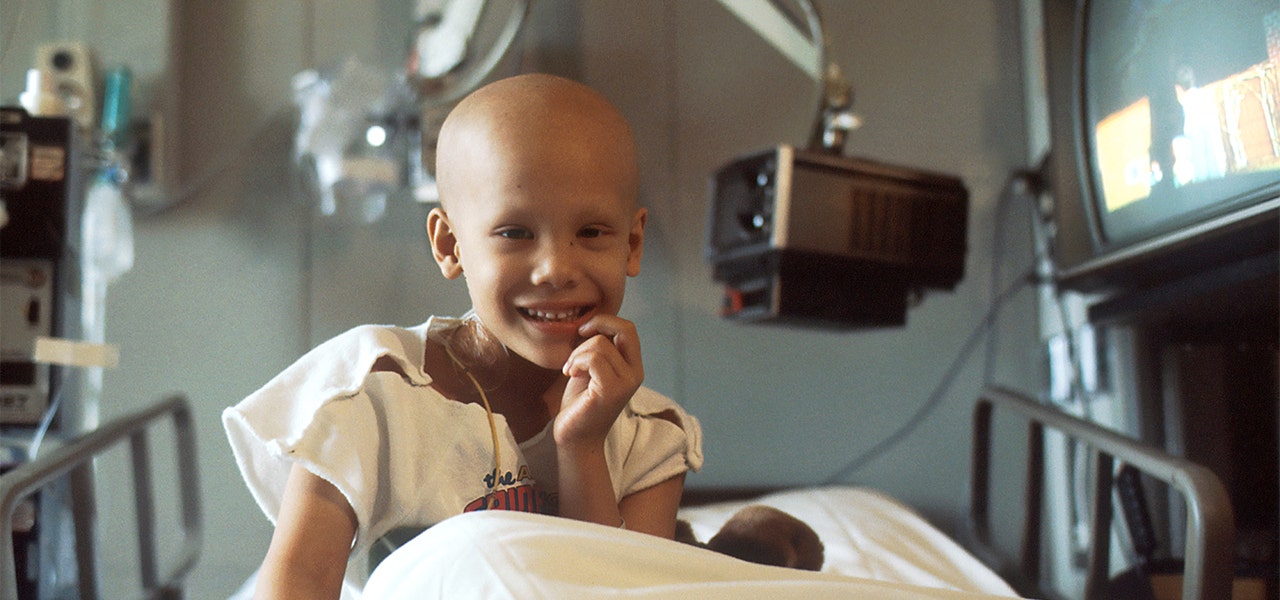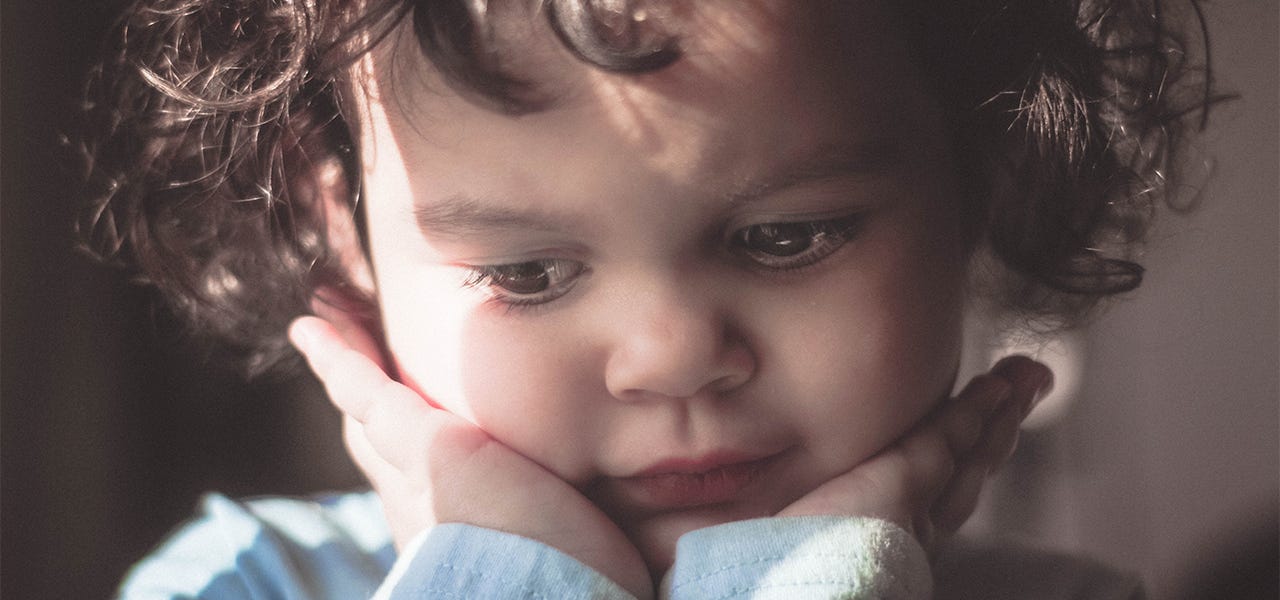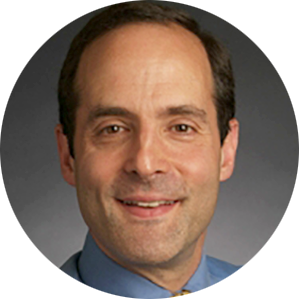In honor of Childhood Cancer Awareness Month, Board-Certified Pediatrician Dr. Arthur Lavin is sharing insight on childhood cancer prevention and more. You can always hear more from Dr. Lavin on the ParentTalk Podcast.
September is Childhood Cancer Awareness Month, which is a great time for us to review cancer in childhood, as painful as such a topic can be.
The good news is that cancer is overwhelmingly a problem associated with aging. Less than 1% of all cancer cases are diagnosed in people under the age of 20. In fact, about 80% of all cancers show up after age 55. Risks of having cancer remain low through age 29, only slowly peaking by age 80. The impact of age is so dramatic that the chance of being diagnosed with cancer at age 80 comes close to being 2000 times greater than at age one or five or 15!
So, if cancer is so much more common in the elderly than the young, why is childhood cancer so commonly discussed? Let’s break it down.
Some Basics on Disease Statistics
Calling the risk of a disease the #1 “most common” event is misleading. The problem is that even a very rare event may turn out to be the most common event in a certain category if the category itself is very rare.
We see this in childhood cancer statistics. Cancer turns out to be the #2 cause of death in children aged 5-9, but that’s because – thankfully – very, very few 5-9 year olds die in the United States. Here are the numbers:
- In 2019, close to 3 million Americans died (2,854,838).
- In the 5-9 age group, that total was only 2,333.
- A good chunk of that lost life was by injury (714).
- Only 371 children died of cancer in that year, and those numbers hold steady over the years.
Those 371 lives lost were out of over 20 million Americans aged 5-9 years old. So, although one may be alarmed to learn that cancer is the second most common cause of death in 5-9 year-olds, be reassured that childhood cancer remains an extremely rare event.
What are the Main Cancers in Childhood?


When childhood cancers do occur, they are generally – again, thankfully – far more manageable than cancers in adults. The most common of all childhood cancers is leukemia, and the most common of leukemias is called ALL, which has very high rates of survival (exceeding 90%) if it starts between the ages of one and nine. Leukemia is followed by brain tumors and then lymphomas, including Burkitt’s lymphoma, which carries the rare distinction of being mostly curable.
There are, of course, nearly a dozen other types of childhood cancer – including retinoblastoma, which appears at birth, and bone cancers most common in teens and young adults – but the top three account for over 60% of them all.
Childhood Cancer Symptoms
Unfortunately, there is no “one symptom” that can determine whether a cancer is present or not – in childhood and throughout life. The symptoms that most frequently appear with any given cancer vary according to what the cancer is attacking.
For example, lymphomas, which cause swelling of immune structures, cause large and persistently growing lymph nodes, which need to be distinguished from the nearly universal experience all children have of swollen glands that appear, last a few months, never get very large and go away. Bone and muscle cancers cause bone and muscle pain. Brain tumors cause neurologic symptoms.
See the pattern?
Screening for Childhood Cancer
Cancer is so incredibly rare in childhood that no screening program has yet been developed to reliably detect the presence or absence of cancer. Of all childhood cancers, the closest action we have to any sort of screening plan is the eye examination every pediatrician performs at birth, during infancy and beyond. Some, not all, retinoblastomas will make a light shining in the pupil appear white rather than red. But even this is not 100% accurate.
One may wonder, “Why not do a regular MRI or blood test to check for asymptomatic developing cancers?” The problem is that with such a rare event, nearly all concerning results would be false alarms, subjecting families to the terror of a cancer scare and even to possibly dangerous treatments and interventions when no illness is present.
Ways to Prevent Childhood Cancer


There are two key strategies available to further decrease the chance of childhood cancer:
- Immunization
- Avoiding harmful exposures
The easiest and most effective strategy is immunization. There are two vaccines recommended that all children receive that can prevent cancer.
- Hepatitis B (HBV) vaccine: HBV is a major cause of liver cancer, especially in Asian countries where chronic HBV is more common.
- Human Papilloma Virus (HPV) vaccine: HPV is the cause of most cervical cancers, and the use of mass HPV immunization has already proven to dramatically decrease the number of young women developing and dying of cervical cancer.
The second strategy is to avoid exposure to substances and radiation that increase the risk of cancer. Let’s take a closer look.
3 Harmful Exposures to Avoid
While it’s still true that the risk of carcinogens for adults is also a problem for children, most of these cancers take time to develop and do not appear in childhood. For your child’s long-term health, it’s still important to avoid:
Tobacco
The carcinogen that causes more cancer than any other is tobacco, which is blamed for roughly one-third of all human cancer. Imagine, if we all agreed to stop growing this plant, we could eliminate one-third of all our cancers! It follows that one step in protecting your children from cancer is to NEVER smoke in the home. EVER.
Radiation
Radiation, specifically melanoma-causing UV radiation from the sun, is proven to cause cancer in children. The radiation from X-rays has been proven to play a role in causing about 5% of all cancers, and so use of X-rays should be kept to a minimum. Fortunately, the X-ray procedures that deliver the most radiation are abdominal CT scans and detailed heart CT scans, both unusual in childhood. The main step here is to use UV-blocking sunwear and sunscreen when your child is outside.
Toxic Chemicals
A number of other chemicals are suspected to play a role in causing childhood cancer, including many pesticides, air pollution, heavy metals, chemical solvents and volatile organic compounds (VOCs). The risk from these exposures for developing cancer is not fully established, but still substantive. It remains prudent to take steps to reduce toxic chemical exposures.
Dr. Lavin’s Bottom Lines on Childhood Cancer
We’ve covered a lot of information – let’s review what we’ve discussed in this post.
- While cancer is rapidly approaching the #1 cause of death in adults over age 55, cancer in children is thankfully a very rare event.
- If cancer is a common cause of death in childhood, how can it be so rare? The answer is that death is also, thankfully, quite rare in American children over the age of one month. The second leading cause of a very rare event is still a rare event.
- The main childhood cancers are leukemias, brain tumors and lymphomas. They account for over 60% of all childhood cancers.
- The success in treating childhood cancers has far outpaced that of adulthood cancers. As of now, 85% of all children diagnosed with cancer will survive those important first five years after diagnosis. Some childhood cancers, including the most common, have survival rates even well beyond this level.
- There are two vaccines that can prevent cancer: the Hepatitis B vaccine and the Human Papilloma Virus (HPV) vaccine.
- To date, we do not have screening powers effective in detecting childhood cancer cases early (with the exception of examining infant eyes for retinoblastoma, which is thankfully very rare as this process is not 100% effective).
- When it comes to preventing cancer causing-exposures, make sure your child is never exposed to tobacco smoke, is always protected from the sun’s UV light and is kept away from toxic chemicals as much as possible.
A Note from Naturepedic


To that last point from Dr. Lavin, a great place to start is your child’s mattress. Children spend a significant amount of time on their mattresses – especially newborns, who can spend up to 16 hours a day in their crib – and a lot of those questionable materials mentioned above like pesticides, heavy metals and volatile organic compounds (VOCs), are common components in conventional crib and kids mattresses.
At Naturepedic, our motto is Only Good Things – because potential carcinogens, endocrine disruptors and other questionable materials just don’t belong in your kid’s sleep space.
Check out our certified organic and non-toxic mattresses for babies and kids to learn more.
 BABY
BABY  KIDS
KIDS  ADULT
ADULT  LEARN
LEARN  STORES
STORES 





